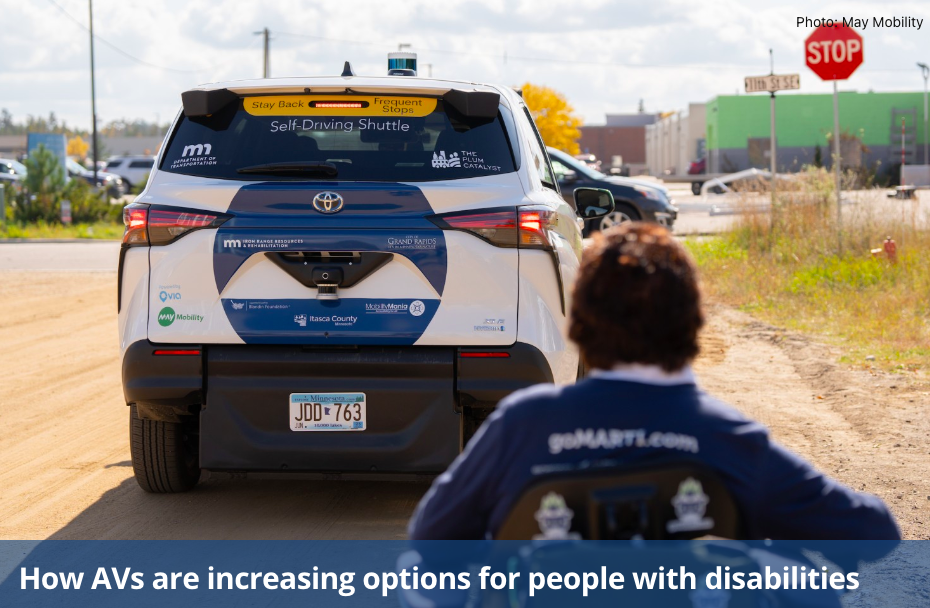“AVs are providing an opportunity to develop a transportation system that treats accessibility as a guiding principle, not as an afterthought,” says William Riggs, Programme Director and Associate Professor at the University of San Francisco in a new whitepaper produced by Cities Today Studio in partnership with May Mobility. “We have capacity to reach people in new ways with multilingual services, and different types of surfacing and audible technology which we’ve never had before.”
For people with disabilities, the elderly and residents who live in underserved communities, barriers exist to accessing reliable transit. People with mobility issues may find it difficult to use public transport, and often rely on specialised services such as paratransit. However, these services can be expensive, may require advance scheduling, and have limited availability.
According to the 2010 Census, up to 1 in 5, or 57 million people, in the US have a disability. AV microtransit can play an important role in helping disabled people achieve their desired level of mobility, and reverse the currently suppressed demand for travel. Riggs found that people aged 18 to 64 with disabilities make 28 percent fewer trips per day (2.6 v. 3.6 trips) on average than people without disabilities. The disparity is even more significant for non-workers.
“In the US, 3.6 million people do not leave their homes because of travel-limiting disabilities,” said Eric Harman, Senior Manufacturing Manager for May Mobility. “Ensuring that autonomous vehicles are developed in a way that advances transportation equity is a key pillar for May Mobility, and we’re working toward a future where everyone has accesss to safe, reliable transportation.”
Providing an equitable service

“It’s really hard from an operational standpoint for transit agencies to provide equitable service across a city and particularly to do so in a cost-effective way,” Riggs says.
He believes that if accessibility is integrated into the current “AV revolution,” it will be considered a fundamental principle rather than an afterthought.

Whether it’s a person with disabilities who needs access to transit in a timelier way or someone who lives in a historically marginalised place that hasn’t been well served by transit, autonomous platforms offer an opportunity to serve areas where it was never cost-effective from the transit operator’s standpoint.
“That’s the biggest promise from a service standards standpoint,” Riggs says. “The ability to access large parts of the city that were really untouched by transit in the past.”